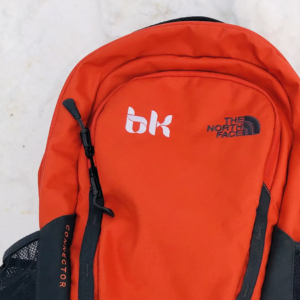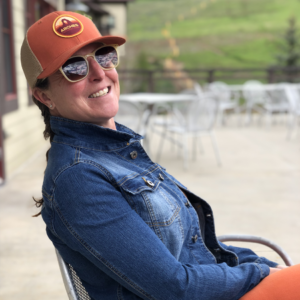How Outdoor Brands Can Use Pinterest to Boost Organic Presence
When it comes to marketing to those who love the great outdoors, the last thing you picture them doing is spending hours scrolling through Pinterest.

But you might be surprised to know that that’s exactly what your audience is spending a good amount of time doing.
When outdoor adventurers can’t be hiking, biking, or backpacking, they’re planning their next trip. That might mean they’re shopping for gear, or looking at images and reading articles of potential destinations.
Since its conception in 2010, Pinterest has gained dedicated users interested in far more than clothes, baking, and interior design.
In fact, close to half of people who use Pinterest turn to the platform to explore a multitude of hobbies — the outdoors included.
48% of Pinterest users are hobbyists, and 16% of these users search specifically for sporting goods.
This is an indicator that many users are looking to make purchases — a desire that resulted in a 115% growth rate in product pins last year.
So what’s the appeal?
Why Pinterest is Popular With Outdoor Enthusiasts
Pinterest’s interface is known for being accessible, especially for trip planning and shopping. Users can search and scroll through ideas without having to commit to long articles or sift through irrelevant material.
Once they find something they like, they can “pin” the image or article to any thematic board they desire.
For example, an outdoors enthusiast could have one board with a “camping destinations” theme, another for wildlife survival tips, and another as a visual shopping list for their favorite camping gear.
This gives your brand multiple ways to appeal to users, and position yourself as an educator in the outdoor industry.
Just like any social media marketing platform, to appeal to your target audiences, you’ll need to have a strong organic strategy in place. This will need to cover things like your brand’s audience and their interests, content that speaks to all levels of the buyer journey, and platform best practices.
Discover how to build an effective Pinterest strategy for your outdoor brand so you can find fresh ways to connect with your audiences and further your content strategy.
Determine Your Audience Personas
The most important piece of developing any digital marketing strategy is having an in-depth knowledge of who your target audience is. It’s also important to understand if your target audience differs from your current audience.
Sure, you might have a general idea of your audience: outdoor enthusiasts in your area, perhaps of a certain gender or age depending on your outdoor brand’s products and services.
But do you know where they spend their time online, the type of content they’re most receptive to, or who they aspire to be?
To find this out, you need to develop audience personas.
Having detailed, data-driven personas to reference instead of a general audience provides many benefits for your outdoor marketing strategy.
Personas help you relate to your audience so you can better identify the challenges and desires your audience has to directly meet their needs. Plus, they give you an “outside perspective” on your brand.
Almost every product and service has at least 2 personas, or types of customers who’d be most interested in your product or service.
To develop a persona, you’ll first need to do some research. Pull your audience demographics to start. You can do this using Google Analytics, Facebook Analytics, as well as the “insights” option on Instagram.
You may also be able to pull demographic info from your email list, or from past customer surveys.
Then build off these stats with the following:
- Audience behavior. For example, do they respond more to your email deals than social media ads or posts?
- Evaluate what this says about their needs and preferences, and the type of content you’re serving up through each channel.
- Customer surveys. Interview a few people who seem to be a good representation of your target audience, whether it’s a long-time customer or someone you’d like to see more often.
- Ask them about things like what they enjoy, their goals with your product or service, the challenges they face with your products, and what type of content they like best.

Once you’ve pooled the information you need, you can begin developing your persona.
Give the persona a name and develop their personality. Cover basic demographics, then move into details like their values, goals, challenges, hobbies, and common objections during the sales process.
Once you have a “profile” built for each persona, you can use them to guide your messaging for your entire digital marketing strategy — not just Pinterest.
Follow the Buyer’s Journey
It’s rare that a customer will go directly from just learning about your brand to making a purchase. Oftentimes, they need to build trust with your company first.
This trust building process is typically referred to as a “buyer journey” and is often demonstrated as a funnel shape with awareness on top, consideration in the middle, and decision at the bottom point.
You’ll want to provide content that “funnels” users down into the third stage, where they’ll be ready to make a purchase.
Awareness Stage Content
The top of the funnel represents the “awareness” stage, also known as the “problem-aware” stage. This stage is where a potential buyer realizes they have an issue or need, and are seeking reliable resources.
For people in this stage, you need Pinterest content that will help excite them about your company, and show off your ability to address any pain points they might have.
This can be done in creative ways through things like:
- Links to educational or inspirational blogs paired with eye-catching imagery
- Quirky social media posts that show off your unique brand voice
- Fun infographics with information on relevant topics, like comparing different outdoor vehicles, tent types, hiking boots, etc
Give them content that will show you’re an experienced influencer in the space, without turning them off with a rushed product pitch or call-to-action. This is the perfect stage to offer a content asset in exchange for an email address, so you can stay in contact with the prospective customer.
Decision Level Content
The next step in the buyer journey — and the middle area of the funnel — is the consideration stage, or the “solution-aware” stage.
Here, potential buyers recognize you as a reliable resource, and are seeking more information about your outdoor brand’s specific products and services.
To meet the needs of those in the consideration stage, create Pinterest content centered on education about your products specifically.
This can include checklists for their next trip that includes your outdoor gear, product review videos, and press blogs.
Consideration Level Content
The final stage is the decision stage. Here, potential buyers are confident in your brand, and are actively comparing your products with competitors before pulling the trigger.
Now is when you can enjoy Pinterest features like “Shop the Look” product tagging, where people can immediately purchase a product or service they see in your post. You can also make graphics featured quotes pulled from positive reviews. Get creative with it!
Make sure you aren’t just using the buyer journey in your social strategy. A content mix that focuses on the various stages of the buyer funnel should be present in your entire digital content strategy, across all your marketing channels.
Find out if your social media is making the most of your content strategy >
Use Pinterest Best Practices
While some best practices like having a consistent brand voice and attractive imagery applies to all social media platforms, Pinterest has a set of its own tips and tricks for engagement.
Make sure you’re following the best practices below to make the most of your organic social strategy and connect with outdoor enthusiasts:
- Use keywords. Use the Pinterest keyword tool to find platform-specific keywords that people are searching for on Pinterest. Use these in your captions and hashtags.
- Include relevant site links. Include site links to things like blogs, products and reviews to help drive web traffic.
- Utilize video content. This is eye-catching and informative, and videos are growing in popularity on Pinterest.
- Utilize the “stories” option. This year Pinterest will be doing a gradual rollout of the stories feature, much like the one you see on Facebook and Instagram. Plan some interactive content to include in your stories, like polls, video reviews, and giveaways.
- Register as a verified merchant to show your brand’s legitimacy.
- Follow the seasons. Pinterest prioritizes content with the highest relevancy. Posting things that align with the current season, like “Best Cold-Weather Winter Camping Gear” in December, can help you be seen by more audience members.
How to Measure Your Organic Pinterest Strategy
To gauge whether your strategy is working and find areas that need adjustment, you’ll need to lay out some KPI’s.
KPIs, or key performance indicators, are different measurements that can give you insight on how well your organic Pinterest strategy is doing.
The types of KPIs you use depend on your goals for using Pinterest. If your Pinterest goal is to get new eyes on the brand, you can evaluate things like post engagement and clicks, or the number of email addresses gained in a list-building campaign.
Pinterest analytics provides most of the insight you’ll need to measure both your engagement and conversions.
To see your Pinterest conversion rate, simply click “conversion insights” on the analytics screen.
Here, you’ll be able to see not only how many purchases occurred through your pins, but whether they were from organic or paid traffic.
By clicking “top pins,” you’ll see a breakdown of engagements, and what categories they fall into (clicks, views, etc.). By analyzing these pins, you can start to get a better idea of what your Pinterest audience is seeking.
By applying certain filters, you can get even more information. For example, if you’re trying to determine the progress you’ve made over the last month specifically, you can use the date filter to view that time-period only.
Ready to Get Started?
Because Pinterest has so many users — many who are ready to make purchases — Pinterest marketing for outdoor brands can be competitive.
To stand out from the crowd, it’s helpful to have experienced professionals in your corner to help create and implement your organic Pinterest strategy.
An outdoor adventure marketing company like BKMedia group knows the outdoor audience, and can keep up with the rapid changes on Pinterest and other social media platforms.
We can help ensure your time and money are going to good use, and that you’re effectively gaining customers and seeing more conversions through your social efforts.
Most importantly, we can make sure your entire social media strategy is just one piece to a holistic content strategy that’s aimed to drive results. After all, if the rest of your social media strategy is lacking, your Pinterest won’t be enough to carry you through!
Take your organic social strategy to the next level. Contact us today! >
Other Articles
Navigating the Off-Season: Marketing Strategies for Outdoor, Overlanding, and Camping Brands
The world of outdoor adventure, overlanding, and camping is fueled by the passion for exploration, nature, and the thrill of...
Mastering Black Friday Cyber Monday Campaigns: Strategies for Outdoor Retail Brands
Black Friday Cyber Monday (BFCM) has become a pivotal period for businesses across various industries, and the outdoor retail sector...
Why Outdoor Retailers Must Plan Black Friday Cyber Monday Campaigns Well in Advance
For online retailers in the outdoor industry, the Black Friday Cyber Monday (BFCM) weekend represents a significant sales opportunity. However,...



